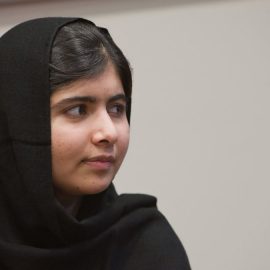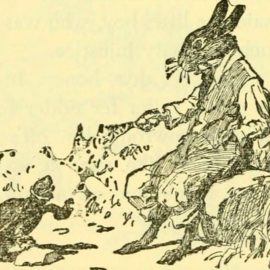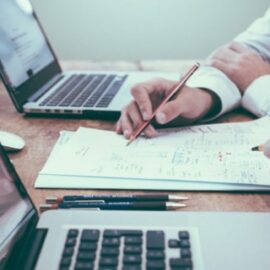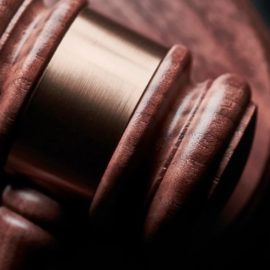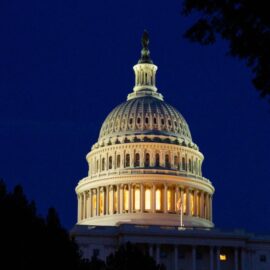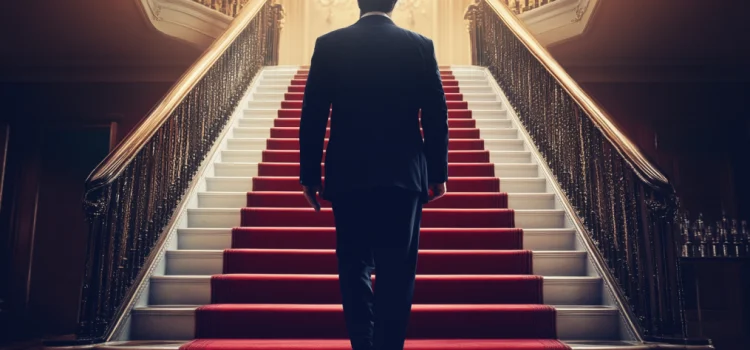

This article is an excerpt from the Shortform book guide to "The Dictator's Handbook" by Bruce Bueno de Mesquita and Alastair Smith. Shortform has the world's best summaries and analyses of books you should be reading.
Like this article? Sign up for a free trial here.
How do political leaders rise to power? What strategies do they use to gain control of a party or a country?
In their book The Dictator’s Handbook, Bruce Bueno de Mesquita and Alastair Smith explore how to gain political power. They outline a two-step process that both dictators and democratic leaders follow to seize control. We break down their insights on building support and replacing existing governments.
Read on to uncover the secrets of political power.
How to Gain Political Power
Before leaders can wield power, they have to secure it. The authors explain how to gain political power, whether you’re a dictator or a democrat:
- Gather the support necessary to control the country
- Replace their country’s existing government
We explain why both of these steps are necessary and how the two different types of leaders follow them.
(Shortform note: While the authors mainly focus on how leaders gain control over existing governments, nations, and large corporations, smaller scale leaders can also build their organizations without having to seize power from anyone else. For example, works like Eric Ries’s The Lean Startup or Chris Guillebeau’s The $100 Dollar Startup discuss how entrepreneurs can build and run their own companies from scratch, while organizers can create new social or political movements and organizations.)
Step #1: Create a Power Bloc
The authors explain that to secure power, a leader must first create a power bloc: a group of supporters capable of taking control of and running the country. No leader can run a country on their own—even if they make every political decision, they still need others to carry out and enforce their will. Leaders create power blocs by promising potential supporters more influence and wealth than they have under the current government.
(Shortform note: In some instances, nobody can create a power bloc strong enough to run a country. This tends to lead to one of two outcomes: 1) A dysfunctional government where no faction can pursue their agenda and nothing gets done. This is the case in Lebanon, which has been unable to elect a president for several years as of May 2024. 2) A civil war that can last from months to decades. This is the case in Somalia, where a decades-long war between various factions began in 1991 and has lasted on and off since.)
The authors argue that leaders want their power blocs to be small, as this makes their power dependent on a few individuals they can control more easily than large groups. However, depending on their path to power and the government they create or inherit, they may end up with much larger power blocs. Let’s examine some of the key differences between small and large power blocs and the leaders who create them.
(Shortform note: As you read about the sizes of power blocs, keep in mind that the authors view the influence and wealth of power blocs collectively—this means that they don’t focus on inequity within power blocs. Therefore, two power blocs of the same size could look quite different. For example, a small power bloc of 100 people could consist of 10 extremely powerful supporters and 90 less powerful supporters, or of 50 moderately powerful supporters and 50 minorly powerful supporters. This potential variance suggests that size might not fully explain the nature of a given leader’s supporters.)
Dictators: Small Power Bloc Leaders
The authors define dictators as leaders with small power blocs consisting of a few influential politicians, bureaucrats, or military officers. These figures provide the influence, money, and manpower necessary to take control of the government. Would-be dictators secure a power bloc by promising these key allies personal enrichment and high-up positions in the new government. For example, Iraqi dictator Saddam Hussein created a power bloc consisting of high-ranking members of his party and the Iraqi military and security state. He did so by channeling Iraq’s oil wealth into projects that benefited his allies.
(Shortform note: Some political scientists argue that a power bloc can’t consist of only a few individuals and must include some portion of the public. According to these scholars, even a dictator needs some degree of public support or at least public passivity to gain power. Otherwise, they’ll be overthrown by popular revolution. While the authors account for the possibility of popular revolutions, they don’t believe the threat of revolution is enough leverage for the public to be part of a dictator’s power bloc.)
Democrats: Large Power Bloc Leaders
On the other hand, the authors describe leaders with large power blocs as democrats. Their power blocs consist of a significant portion of their country’s population. While each individual supporter may not have as much power or wealth as a high-ranking politician, large power blocs collectively have enough to take control of the government. Potential democratic leaders secure support by promising to distribute more wealth and power among the groups who back them.
For example, American politician John F. Kennedy created a power bloc of progressives, the working class, and Black Americans during the 1960 presidential election cycle. He attracted this significant portion of the American public by promising to pass anti-poverty initiatives and liberal social reforms that would directly benefit them.
(Shortform note: According to the authors, members of democratic power blocs are more motivated by the prospect of personal gain than they are by ideology. Various scholarly research suggests that this question isn’t so clear-cut—ideological concerns can outweigh personal benefits under certain circumstances. For example, one study found that in Egypt, ideology was more important than personal benefit among voters who rejected the political status quo. Another study of Benin’s elections found that ideology mattered more to women and minority ethnic groups who were less represented in the current government.)
Step #2: Replace the Existing Government
The authors explain that once a potential leader has secured a power bloc, they can replace their country’s existing government. There are two main methods of doing so, which dictators and democrats approach in different ways:
Method #1: Force
The authors explain that a leader can leverage the strength of their power bloc to oust the existing government. This often occurs when a country lacks a formal route for a new leader or power bloc to take charge—for example, a dictator replacing a democracy or vice versa.
Dictators accomplish this by using their small power blocs to quickly seize key infrastructure, kill, arrest, or exile members of the existing government, and declare themselves in charge to the public. For example, in 1977, Pakistani leader Muhammad Zia-ul-Haq, backed by the firepower and authority of his supporters in the military, took control of the country’s communications infrastructure, arrested key members of Pakistan’s democratic civilian government, and declared military rule.
Democrats accomplish this by mobilizing their large power blocs to participate in mass movements and popular revolutions, taking control of the country through sheer numbers. For example, Jawaharlal Nehru became India’s first prime minister in 1947 after helping to organize decades’ worth of mass strikes, boycotts, and other demonstrations. These effectively shut down the country, giving the Indian independence movement the leverage it needed to force the dictatorial colonial British government to withdraw from the country.
(Shortform note: Even when forcing out the existing government, new leaders often won’t completely replace it—instead, they’ll recruit, co-opt, or otherwise allow portions of the former leader’s power bloc to stay in power. Both democrats and dictators do this. For example, after a mass political movement replaced South Africa’s apartheid regime with a new multiracial democracy, the 1994 democratic election saw the new African National Congress (ANC) form a coalition government with the formerly apartheid National Party. And after the Turkish military forced the prime minister to resign in 1971 and took partial control of the country, they still collaborated with existing civilian political parties.)
Method #2: Political Institutions
Leaders can also replace their country’s existing government by using political institutions that are already in place. These institutions provide a formal route for a new leader or power bloc to gain power.
Dictators accomplish this by using the influence of their power blocs to take control of institutions closed off to the general public. These include closed-off elections, rigged popular elections, and bureaucratic systems for leaders to appoint their successors. For example, Soviet leader Leonid Brezhnev gained a leadership position in the Soviet Union in 1964 when his power bloc won him an election open only to members of the Communist Party of the Soviet Union.
Democrats use existing institutions by leveraging their power blocs to win a majority or plurality of votes in a popular, free, and fair election. Some democracies have the people vote directly for a leader, while others have people elect representatives who then vote for a leader from among themselves. For example, in 2023, Luiz Inácio Lula da Silva replaced Jair Bolsonaro as president of Brazil after winning a majority of votes in the 2022 Brazilian general election.
(Shortform note: The authors note that both dictators and democrats can use elections to replace an existing government—but larger power blocs have freer and fairer elections. But what makes an election free and fair? According to political scientists, a free election is one where every adult who wants to vote or demonstrate politically is able to. This also implies a lack of coercion or intimidation. A fair election, on the other hand, is one where every person’s vote counts equally. This often means having impartial observers verify vote totals to ensure they haven’t been manipulated. Dictatorships can hold elections, but they have to either restrict the voting population or cheat—otherwise they’d have to rely on a much larger power bloc.)
Exercise: Analyze Your Nation’s Power Bloc
Consider the size and composition of your nation’s power bloc and how that might influence public policy.
- Do you think your nation’s leader has a small, medium, or large power bloc? In other words, how many people do you believe determine who’s in charge of the country? Why? For example, maybe your leader has a large power bloc because they won a free and fair election to gain power.
- What does the power bloc of your leader look like? Who are key individuals, interest groups, or demographics in it? For example, maybe your leader’s power bloc consists of the urban upper and middle classes as well as the rural poor.
- How do you think your leader’s power bloc influences their policies? For example, maybe your leader promotes agricultural subsidies to benefit their rural supporters.

———End of Preview———
Like what you just read? Read the rest of the world's best book summary and analysis of Bruce Bueno de Mesquita and Alastair Smith's "The Dictator's Handbook" at Shortform.
Here's what you'll find in our full The Dictator's Handbook summary:
- The two factors that truly distinguish one political system from another
- How leaders seize and stay in power in democracies and dictatorships
- The specific reason why democracy is better than dictatorship

